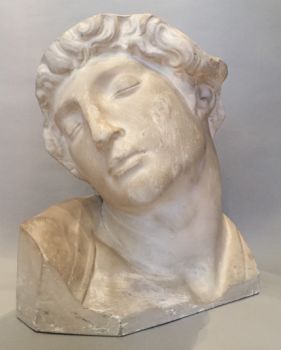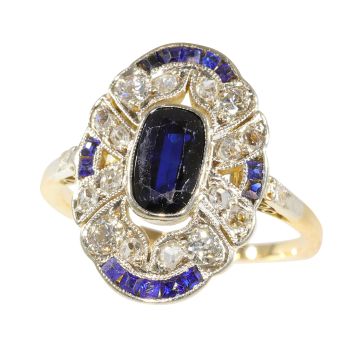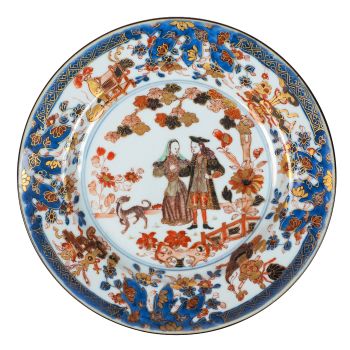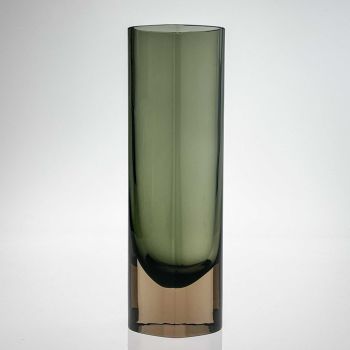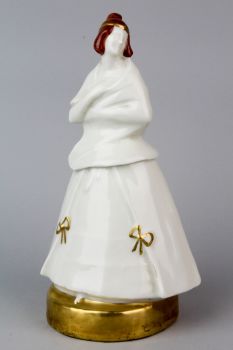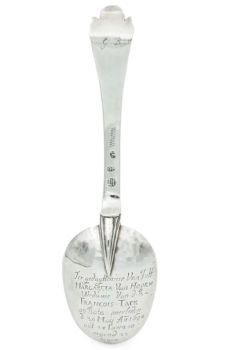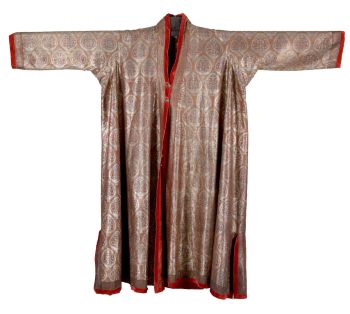A Chinese export 'famille verte' porcelain armorial dish with the coat-of-arms of Groningen 1700 - 1710
Artista Desconocido
Porcelana
38 cm
Precio a consultar
Zebregs & Röell - Fine Art - Antiques
- Sobre la obra de arteA Chinese export 'famille verte' porcelain armorial dish with the coat-of-arms of Groningen
Three styles of these so-called provincieborden or 'province' dishes were ordered by the Dutch in China between circa 1700 and 1720, each with the name and the coat-of-arms of a province or town in the Netherlands, England, France or Austrian-ruled Belgium. The present dish with the coat-of-arms of the city of Groningen belongs to the earliest decoration style.
This dish bears the coat-of-arms, a double-headed eagle, of the city of Groningen, as indicated in a banderole with the name Groeningen. Groningen is the most important city in the north of the Netherlands. From the moment it gained city rights in 1245 till the French era, being somewhat isolated from the centre of power in the west of the Netherlands, Groningen could be considered an independent Hanseatic city-state orientated towards north Germany. After 1594, the province (bearing the same name as the capital city) joined the Dutch Republic in its fight against Spain and later became a crucial hub for the Dutch West India Company in the north of the Netherlands. - Sobre el artista
Puede suceder que un artista o creador sea desconocido.
Algunas obras no deben determinarse por quién está hecho o por (un grupo de) artesanos. Algunos ejemplos son estatuas de la Antigüedad, muebles, espejos o firmas que no son claras o legibles, pero también algunas obras no están firmadas en absoluto.
También puedes encontrar la siguiente descripción:
•"Atribuido a …." En su opinión, probablemente una obra del artista, al menos en parte.
•“Estudio de….” o “Taller de” En su opinión, una obra ejecutada en el estudio o taller del artista, posiblemente bajo su supervisión
•“Círculo de…” En su opinión, una obra del período del artista que muestra su influencia, estrechamente asociado con el artista pero no necesariamente su alumno.
•"Estilo de …." o “Seguidor de…”. En su opinión, una obra ejecutada al estilo del artista pero no necesariamente por un alumno; puede ser contemporáneo o casi contemporáneo
•"Manera de …." En su opinión una obra al estilo del artista pero de fecha posterior
•"Después …." En su opinión, una copia (de cualquier fecha) de una obra del artista
•“Firmado…”, “Fechado…” o “Inscrito” En su opinión, la obra ha sido firmada/fechada/inscrita por el artista. La adición de un signo de interrogación indica un elemento de duda.
•“Con firma…”, “Con fecha…”, “Con inscripción…” o “Lleva firma/fecha/inscripción” en su opinión la firma/fecha/inscripción ha sido añadida por alguien que no es el artista
¿Está interesado en comprar esta obra de arte?
Artwork details
Related artworks
- 1 - 4 / 12
Unbekannter Künstler
Series of 6 Chinese cups and saucers (Yongzheng period)1722 - 1735
Preis auf AnfrageKuipers Kunst & Antiek
1 - 4 / 17René Lalique
Eine sehr seltene tiefgrüne Fougeres-Vase, entworfen von R. Lalique1912
€ 8.950Lennart Booij Fine Art and Rare Items
 Kuratiert von
Kuratiert vonSilla Scheepens
Demetre Chiparus
Demetre H. Chiparus – Bronze Art Deco statue “Rapture” – Édition Etling, Paris1920 - 1929
Preis auf AnfrageAntiques Emporium
1 - 4 / 24Unbekannter Künstler
A silver spoon commemorating Juff’ Margareta van Hoorn1656 - 1694
Preis auf AnfrageZebregs & Röell - Fine Art - Antiques
Unbekannter Künstler
EINE SAMMLUNG VON VIER SRI LANKAN IVORY BIBELKÄSTCHEN18th century
Preis auf AnfrageZebregs & Röell - Fine Art - Antiques
Unbekannter Künstler
EIN GILT-SILBER SRI LANKAN DOKUMENT SCROLL CONTAINER19th century
Preis auf AnfrageZebregs & Röell - Fine Art - Antiques
 Kuratiert von
Kuratiert vonDanny Bree
Cornelis Anthonisz Theunissen
SEHR SELTENE ERSTE GEDRUCKTE KARTE VON AMSTERDAM, EINER STADT AUF DEM AUFSTIEG1544
€ 175.000Inter-Antiquariaat Mefferdt & De Jonge
 Kuratiert von
Kuratiert vonDanny Bree
1 - 4 / 24Samuel Dejong
Anatomia Blue Heritage, Hercules Open2017 - 2019
Preis auf AnfrageVilla del Arte Galleries
 Kuratiert von
Kuratiert vonGallerease Magazine
1 - 4 / 24Unbekannter Künstler
EIN GILT-SILBER SRI LANKAN DOKUMENT SCROLL CONTAINER19th century
Preis auf AnfrageZebregs & Röell - Fine Art - Antiques
Unbekannter Künstler
A Surinam-themed Amsterdam long-case clock1746 - 1756
Preis auf AnfrageZebregs & Röell - Fine Art - Antiques
 Kuratiert von
Kuratiert vonGallerease Magazine
Wolfgang Hugo Rheinhold
“Eritis sicut Deus”1900 - 1950
Preis auf AnfrageZebregs & Röell - Fine Art - Antiques
Unbekannter Künstler
Zwei Studienporträts von Mas Marco Kartodikromo1900 - 1950
Preis auf AnfrageZebregs & Röell - Fine Art - Antiques
Dutch School
Ankunft eines niederländischen Ostindianers in der Table Bay18th century
Preis auf AnfrageZebregs & Röell - Fine Art - Antiques
1 - 4 / 12












